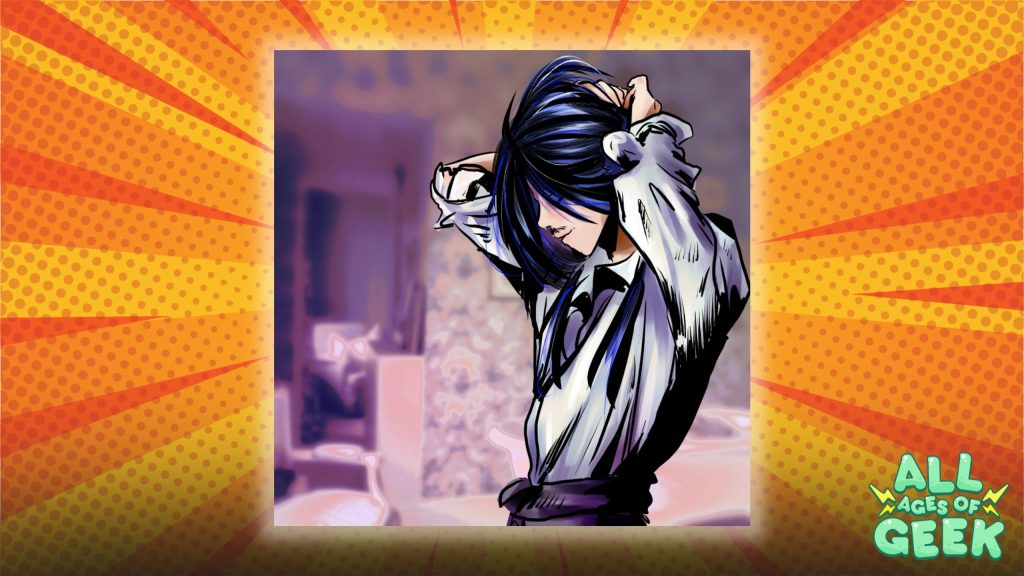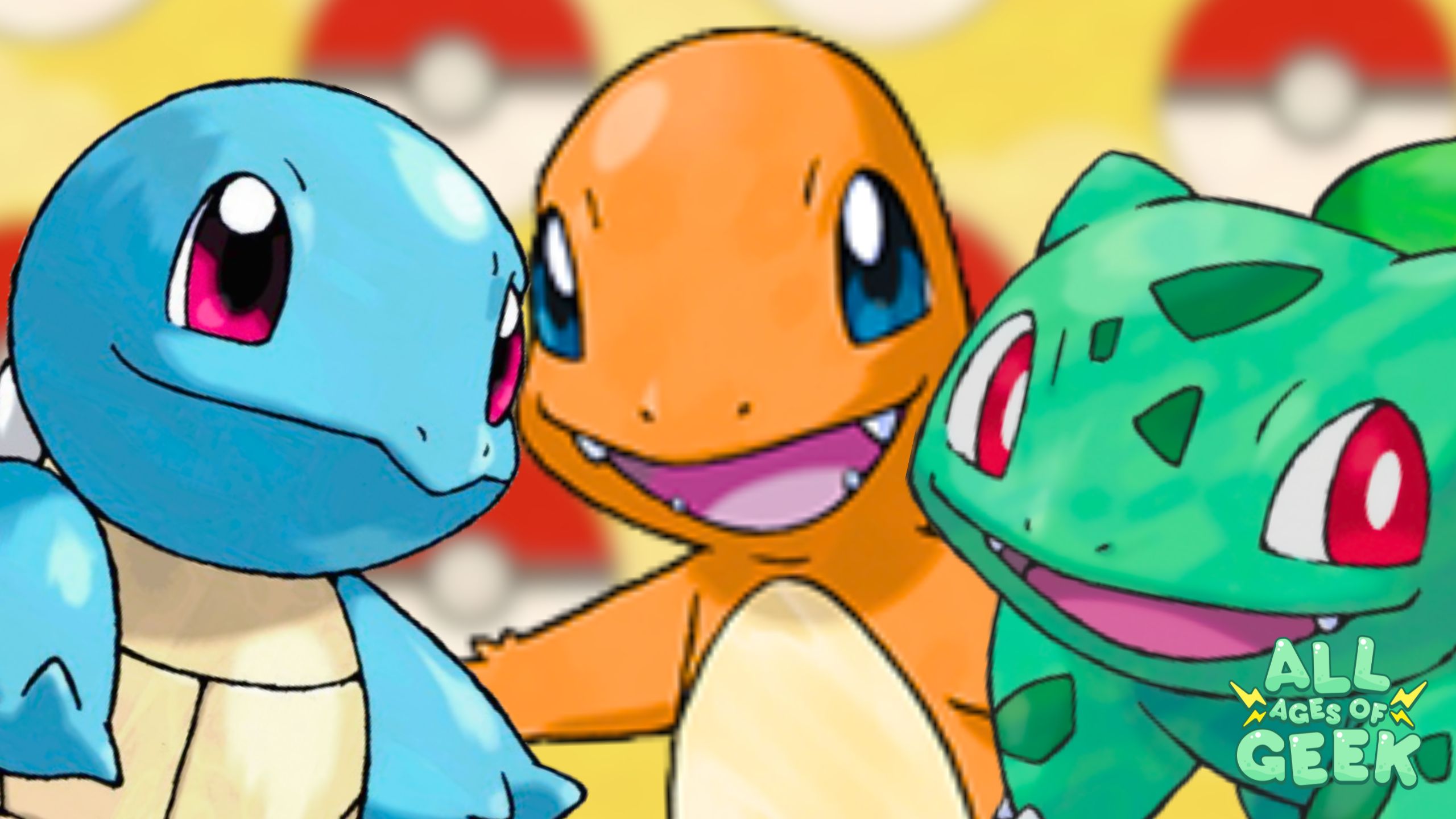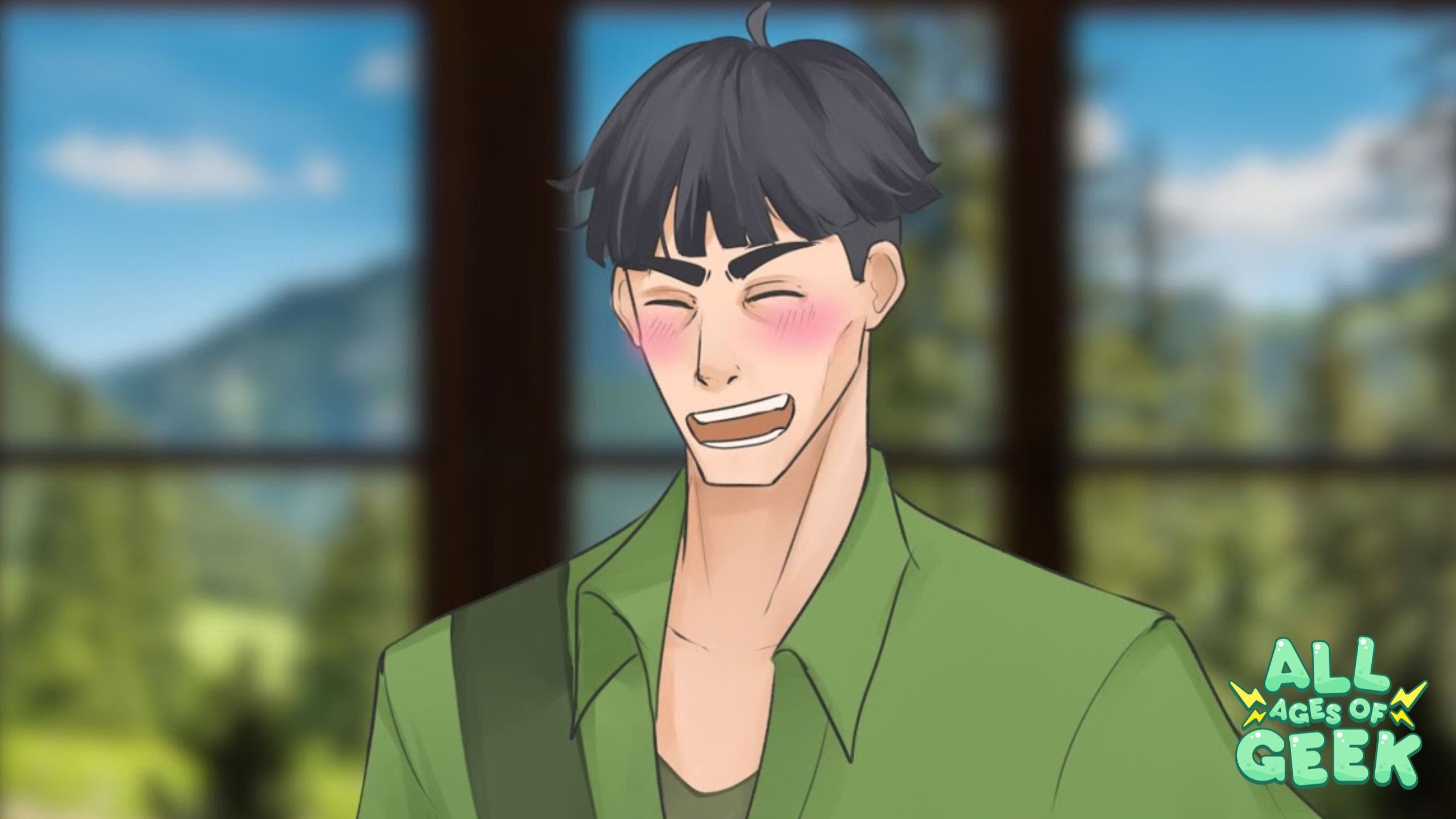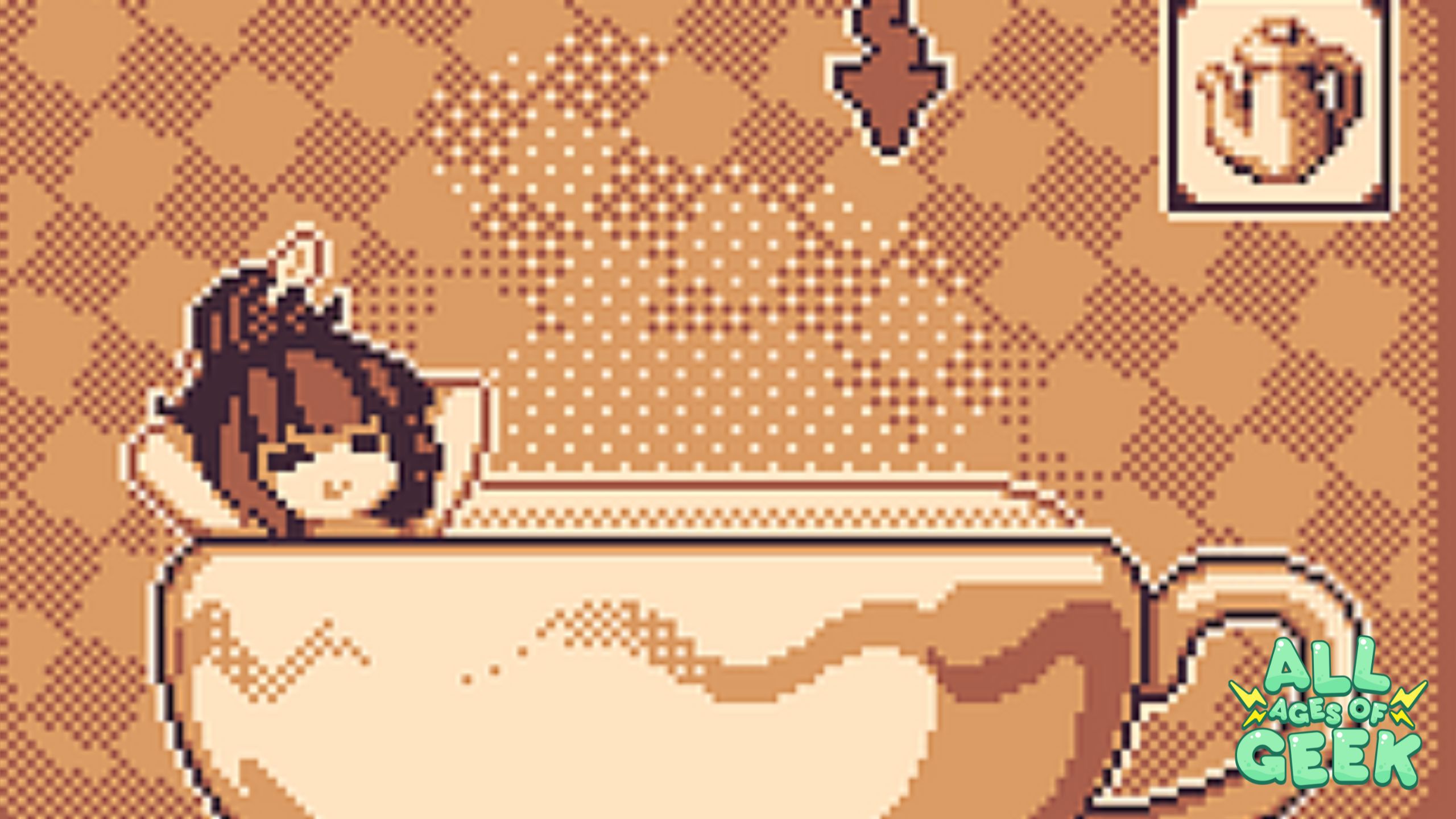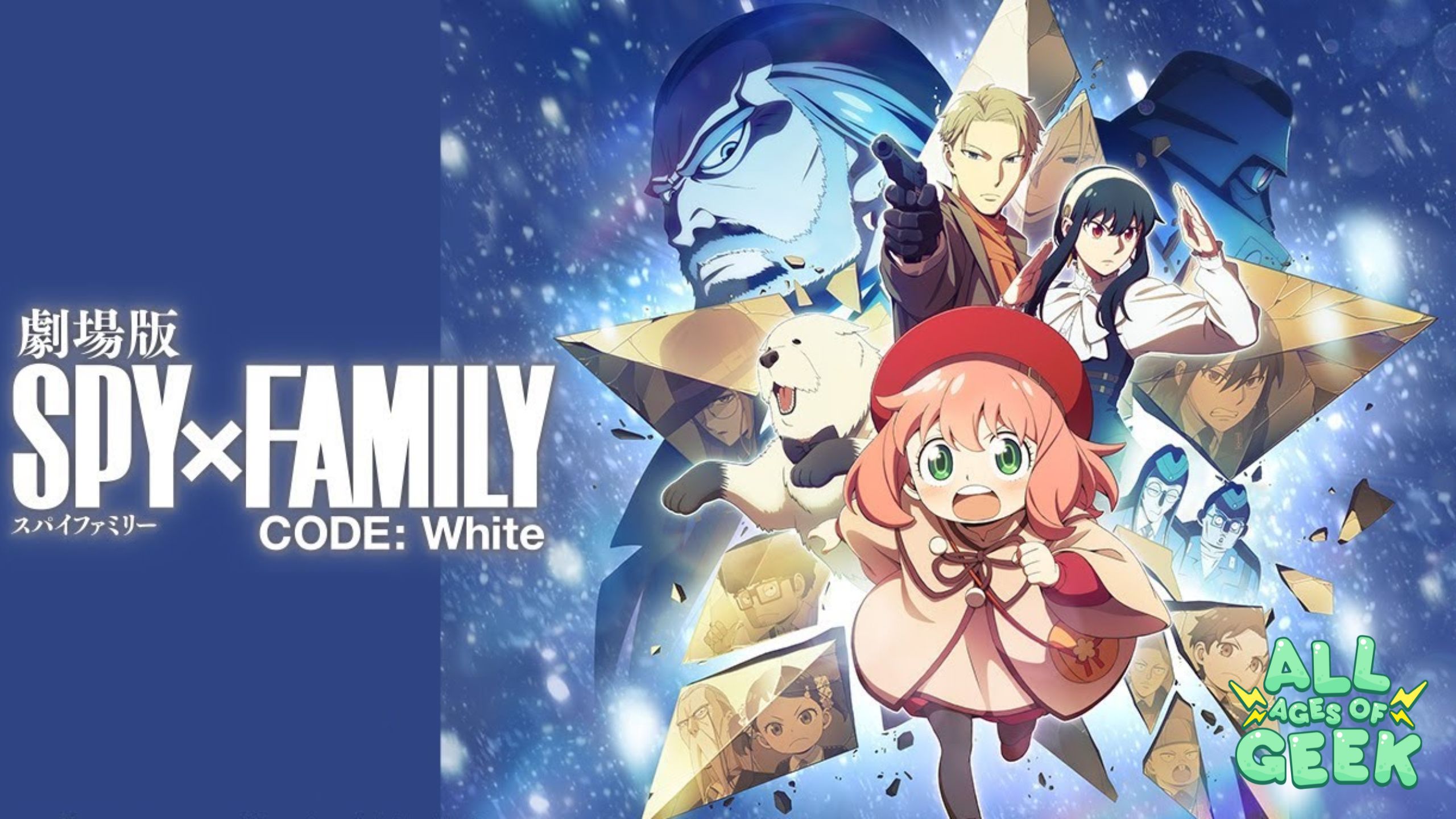Interview with Elżbieta Wancław-Chłopik Creator of “Children of Chaos” – All Ages of Geek Tapas Reviews
Hey, All Ages of Geek family! It’s time to guide you into a dark and thrilling world that will leave you on the edge of your seat with “Children of Chaos” creator Elżbieta Wancław-Chłopik on our Tapas Creator Interview series. In this universe, demons, angels, and gods wage a war that blurs the lines between good and evil. As we navigate through intense power struggles, violent clashes, and political intrigue, we’ll uncover a gripping drama that doesn’t shy away from life’s harsh realities. So brace yourselves, and let’s embark on this exhilarating journey where the battle between light and darkness is far from over.
A note from Elżbieta Wancław-Chłopik Creator of “Children of Chaos”
Welcome to a dark and thrilling world where the battle between good and evil is far from over. Demons, angels and gods exist in this universe, and the aftermath of their war has created a landscape full of danger and uncertainty. Ongoing power struggles, violent clashes and political intrigue create a gripping drama of manners. As a change of leadership takes place in the Heavens, tensions mount and a watchful eye is kept on both sides. Prepare for a story that does not shy away from the hard realities of life, with descriptions of brutal violence, mental illness, drug use and alcohol consumption. Step into this world and discover what happens when the lines between right and wrong are blurred.
What initially sparked your passion for creating comics, and how did that desire evolve into the work you produce today?
At the moment, you can dive into the opening chapters of my novel in English, which started as a passion project after my fascination with comics as a teenager. While the ‘Witch’ series caught my eye at a young age, I yearned to create a story with more depth and complexity.



Inspiration struck when I read Neil Gaiman’s ‘Lucifer’, and I realized that comics could be an excellent medium to explore mature themes. Despite never being a fan of Batman, comics like ‘Batman Who Laughs’ or ‘A Death in the Family’ also influenced my writing. Additionally, the manga version of ‘Hellsing’ and the captivating ‘MADK’ caught my attention.
My desire to transport readers to the vividly described locations in the novel led me to incorporate visually stunning elements into my storytelling. While reading is immersive, seeing those places in detail enhances the experience.
Can you walk us through your journey as a comic creator, starting from the moment you first decided to explore this medium?
During my teenage years, I would often doodle funny single strips or situational jokes in my school notebooks to get my classmates laughing. My attempts at creating comic zines were short-lived since I lacked the necessary skills and struggled with framing.
However, my creative journey took a turn as I began exploring poetry, prose, photography, and even performance art. I soon realized that the principles of one art form could easily be translated to another. This discovery even led me to experiment with making films for a while.
When I returned to creating comics, the process was much smoother for me. I started with paper sketches, a technique I still use today, but now I create the final illustrations, graphics, and comic pages digitally. I began with Sketchbook’s free version, which had limited brushes, but my favorite tool is Clip Studio Paint. It not only allows me to experiment more but also simplifies working with perspective.
Your work touches on various themes and subjects. How do you choose which stories to tell, and what do you hope your readers take away from them?
My stories are a complex web of characters and events, with several main characters whose fates are closely intertwined. I focus on the highlights that drive the plot, which changes depending on which character’s thread is most important at the time.
All of my characters have problems, yet they believe they are doing the right thing and making the best possible decisions. What is a solution for them becomes a curse for someone else, adding layers of complexity to the story.
I hope readers take away the realization that everyone sees themselves as a hero in their own story, even if they are viewed as an enemy by others. No one believes their actions are fundamentally wrong. In my stories, there is no definitive right or wrong, much like in real life. I leave everything up to interpretation, encouraging readers to form their own opinions.
What led you to choose Tapas as the platform for sharing your comics, and what aspects of the site do you find most appealing for your work?
After exploring various websites, I was finally convinced to choose Tapas due to its impressive potential. My stories tend to delve into sensitive topics such as violence, substance abuse, and mental illness. However, with appropriate labeling on Tapas, I can share these themes and connect with readers who can relate to such experiences.
What sets Tapas apart is its active community and resources, such as the supportive forum and Discord channel. As a budding creator, I appreciate the transparency and clarity that the platform provides.
Overall, Tapas is a great choice for creators who want to share their work while being able to address sensitive topics in their storytelling.
Tapas has its own unique features and community. Are there any aspects of the platform that you feel could be improved, or perhaps have been challenging to navigate?
Tapas provides great opportunities for authors to monetize their work, but there’s always room for improvement. I believe the platform could benefit from offering readers more variety and interesting options. For instance, more promotion of dramas would be great as they tend to get lost amidst the abundance of romance stories.
Moreover, the site’s search engine can be challenging to navigate, and a sorting option by publication date would be helpful. This would prevent the frustration of coming across promising works that haven’t been updated in years. The option to sort search results by publication date would also allow users to make informed decisions when discovering new and current works.


As an author, I also feel that Tapas could improve the text editing window for novels. It would be great to have additional font options or the ability to center text, as this would streamline the editing process.
In your opinion, what distinguishes independent comics from mainstream comics, and why do you think the indie scene is important for the overall comic industry?
Above all, creative freedom. Comics created for large publishing houses often have to deal with the expectations of target groups and marketing representatives. This applies not only to comics themselves, but often also to series or other mass culture creations. For example, people have taken a liking to a character and there is immediate pressure to keep him or her alive, even though the storyline makes no sense.
Independent comics are also a mine of interesting visual styles, new untrodden paths and ideas – often the people behind independent comics are individuals who are just taking their first steps in the industry. Sometimes they don’t know how a problem is usually solved, so they develop their own new way – then we get a work that has something different and interesting in it. An approach that we haven’t experienced before.
In addition, indie comics and platforms such as Tapas provide an opportunity for any artist to develop and raise their voice, regardless of their financial possibilities and the time they have for creative work. Everyone adjusts the pace of their work individually and creates their own schedule – the artist is the first person to interact with the audience here.
As a comic creator, what are some unique storytelling techniques you’ve developed to set your work apart from others in the genre?
Above all, storytelling with images, which is also evident in the novel. While my prose relies heavily on dialogue, the comics are about the magic of places and settings, which say a lot about the characters – as does their body language and doublespeak.
What the reader sees is not always the truth, and it is up to the viewer to decide whether what we see and read is really the real state of the universe or just how a character perceives the world. In addition, I try to use a blank frame, which usually remains white – depending on how much emotion encompasses the character we are following, its colour changes – as does the number of details about the background and what it suspends its gaze on.
Apart from your comics, what other avenues do you explore to engage with your audience, such as social media, live events, or merchandise?
Definitely independent events. I support several local poetry competitions, go to exhibitions by local painters I know. I participate in local art projects when I can, and I also keep up to date with short film projects. As for social media, I’ve been using it less and less lately: I still have favourite artists on YT and TT, but I’ve noticed that I enjoy the conversation on Discord and the community there more.

Creating comics can be both rewarding and challenging. Can you share some of the struggles you’ve faced along the way, and how you’ve overcome them?
From a technical standpoint, I initially challenged myself to master digital drawing. As someone who had primarily worked with pencils and watercolors for most of my life, transitioning to digital art was a journey that began less than four years ago.
When it came time to create my comic, I faced some difficulties with properly placing the comic balloons without overwhelming the page. This is especially evident in the opening chapters. Similar challenges arose with framing and perspective – bad camera work can really detract from the overall mood of the pages. Over time, I’ve worked to address these issues and improve my inking and skin shading, as well as prioritize capturing accurate facial expressions.
But there’s also a more intangible aspect to my work. Since my comics often use novel material, I’m faced with the challenge of conveying something unique that differs from the prose scenes. It’s important to me to give readers something more beyond just the same old story.
By continually refining my skills and experimenting with new approaches, I hope to create comics that are not only visually captivating, but also emotionally resonant and thought-provoking.
Are there any comic creators, artists, or writers who have been particularly influential or inspiring to you? How have they shaped your creative journey?
Definitely the already mentioned comics from under Neil Gaiman’s tutelage (‘Sandman’ and ‘Lucifer’). I’ve also been heavily influenced by French philosophers – I know it’s very unusual, but there’s something about the work of Baudrillard and Quignard that escapes the confines of tradition. It seems to me that transferring their insights to the novel gives a lot.
I am fond of the Polish writer Henryk Bardijewski, unfortunately I have no information on whether his works have been translated outside the country.
Thanks to such a rather strange mix, I think I sometimes manages to capture the mundanity of the intangible and the surrealism of everyday scenes. Hence, in a way, a demon living like a typical bureaucrat doesn’t sting the reader’s eyes, and a god not coping with his sudden mortality jokes about it as if it were a blessing. “You envy me because it’s something you don’t have,” he manages to say while fighting for every breath, and he’s essentially right.
And humour. I always try to wring humour out of the absurdity of a situation. It seems to me to be the most valid way.
For aspiring comic creators, what are some practical tips and advice you would give to help them find their own voice and style?
Just keep trying. Try to learn the rules and then break them. Start from scratch, don’t be afraid of challenging frames and subjects. Only the challenging really develops.
Can you tell us about your creative process, from brainstorming ideas to the final execution of your comics? How do you stay motivated and consistent throughout?
The comic creation process begins with the script. Often, I already have parts of it written down in the novel. So, I pull out the manuscripts and, along with my notes, begin designing the layout of the characters and panels.
Luckily, I have a vivid imagination that allows me to envision every detail of the scene while writing. This helps me to quickly pick out the essentials and bring them to life.
Next, I create the comic file in Clip Studio. I start by sketching the characters and drawing the background, then add lettering. Once the background is complete, I go back and focus on drawing and shading the characters. This method allows me to seamlessly integrate them into the background.
The main comic is black and white, which is where my work usually ends. However, for color one-shots, I carefully choose color themes that capture the mood of the chapter and events.
Throughout the process, I like to listen to rock music and podcasts of all kinds. This helps me stay focused and inspired. By refining my skills and following my creative process, I hope to continue producing comics that are both visually stunning and emotionally resonant.
How do you balance the creative and business aspects of being an independent comic creator, such as promoting your work and managing finances?
I’m also currently working full-time, so it’s not that much of a problem. I create in every spare moment – it’s basically a second job, but one that gives me joy in life. It’s basically enough for me.
Funding creative projects can be challenging for many artists. What strategies have you employed to fund your comics, and are there any resources you’d recommend to other creators?
I’m publishing online for now and I think that’s always a good start. It’s easier to find an audience, to test your strengths and weaknesses. It’s also easier to identify what might be successful in print. I continue to think that a dropbox is a good start. Possibly small print runs and trips to local conventions.
How do you stay updated on the latest trends and developments in the comic industry, and how do you integrate this knowledge into your work?
I browse the latest comics, follow online publications, and try to learn something new from every comic that comes into my hands. Sometimes it’s chiaroscuro and sometimes the dosage of tension. I think the most important thing, though, is to focus on making sure that the product I give away pleases the viewer as much as it pleases me.
In what ways do you believe the comic industry is evolving, and what opportunities do you see for independent creators in the future?
I think, however, comics will gradually move to digital – it’s easier. That way everyone has a library in their own pocket, on a smartphone screen, which usually renders colours beautifully.
It’s unlikely to be a matter of the next few weeks or months, but this change is already visible and offers great opportunities precisely for independent creators. I expect this market will only flourish – to the benefit of us all, because who doesn’t want to see and read all these fascinating stories?
Collaboration can be an essential part of the creative process. Have you worked with other creators or artists on projects, and if so, how have those experiences shaped your work?
Yes, it happened that I worked as a graphic designer on a richly illustrated text-based rpg game combined with a comic book. It was a challenging collaboration, but one in which I learned good work planning and very clear communication about the final layout of the pages.
I’m planning another collaboration where I’ll be inking the comic, one of my favourite parts of artwork. In general, however, I usually work on my own series from the visual side alone.
What are some personal or professional goals you have for your comic career, and how do you plan to achieve them in the coming years?
First and foremost, I would like to translate all the pages of the comic that have already been created and make them available to a wider audience. I’d like to find an audience for it, and perhaps offer a paper version as well – even though, as I mentioned earlier, they’re gradually becoming obsolete, it’s still nice to have a copy on the shelf.
I would like the creation to bring me some real profit over time, but I also know that I do it out of genuine passion and the need to tell these stories to the world.
As a creator, how do you measure success, and what achievements are you most proud of so far?
Up until now, I have not really dealt with the visual side of art. As I mentioned at the beginning of the interview, I have rather written poetry and prose. I am the author of two poetry books published by publishing houses, I patronise competitions locally, and I also ran a creative writing course for a while. I think, however, that the real measure of success is the involvement of its audience in art.
Lastly, could you share an anecdote or experience from your comic-creating journey that has had a profound impact on you, and what did you learn from it?
My experience is first and foremost that art is a semi-magical medium. Usually comics and novels are created in solitude, or in a very narrow circle, but they can bring a lot of people together really. Through my creative work, I’ve met a lot of great people with whom I understand each other really well. A shared passion can make all the difference.
https://www.tiktok.com/@etera_art
https://www.instagram.com/etera_arts/
We’ve ventured together through this dark and enthralling world, experiencing the aftermath of celestial wars, the complexities of shifting leadership, and the consequences of blurred moral lines. Thank you for joining us in exploring this intense and thought-provoking story. Remember, the All Ages of Geek family is here to bring you the most diverse and captivating tales, celebrating the creative and imaginative spirit of storytelling. Until next time, stay geeky, stay curious, and keep exploring the worlds that defy the boundaries of imagination.
About Stec Studio, All Ages of Geek and “I Married a Monster on a Hill”
Stec Studio is a New Jersey-based company founded and run by by the Stec Sisters. We specialize in producing interactive comics and novels based on All Ages of Geek media, as well as creating a fully open world Boys Love Universe called BLU Media. This universe is being built from various media forms, including readable media, games, and animations.
Our main series, I Married a Monster on a Hill, is a WEBTOON that tells the story of a retired knight who falls in love with a half-monster. We are also developing an in-production visual novel called I Married a Monster on a Hill: Dates, along with an upcoming Wattpad Exclusive set in the same Universe. At Stec Studio, our goal is to create content that gives people hope and light, and we hope our stories can provide joy and entertainment to all who experience them.


